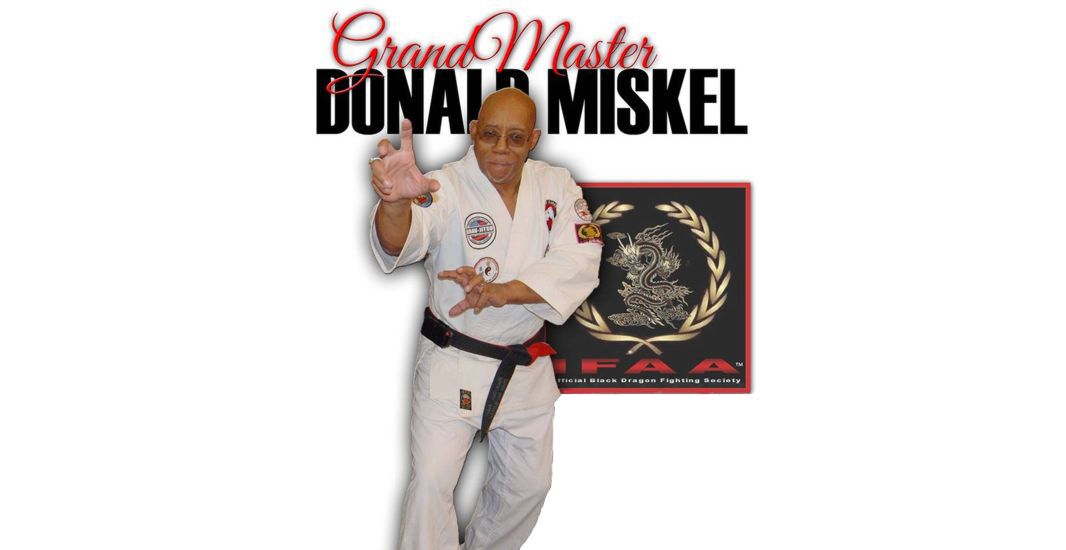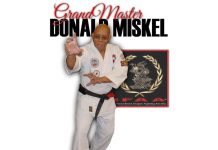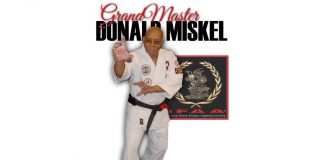The problem that I have with many of the martial arts that are being taught today, is that they are long on technique and short on basics.
Way back in the day when I was a kid (some of my students will think that that was in the beginning of time), my father took me to downtown Chicago. He showed me a construction site where they had dug the deepest hole that I had ever seen. It looked to me like they had dug to the very center of the earth.
I asked my father why they were digging such a big hole. He told me that they were going to build, what was to be, the tallest building in Chicago. No, I’m not talking about the John Hancock Building or the Sears Tower. I may be dating myself, but I’m referring to the Prudential Building.
I wondered why they were digging a hole if they wanted to build a tall building. It didn’t make sense to me. Being only a child, I didn’t understand the need of a solid foundation in building. Unfortunately, a lot of Western martial artists suffer from the same short sightedness. They want to build tall, without digging deep.
Christ told the parable about the man who built his house on the sand. It stood quite secure until the rains came and the storms raged. Too many of us find ourselves in a similar situation. Our martial art skill is fine as long as we aren’t faced with any real opposition. You may ask yourself why this is. It can stem from any of a number of reasons. It can be a lack of native ability, or physical skills in a person. He can lack the reflexes or the needed eye hand coordination needed. Some people are strong and have the musculature that is complimented by slow twitch muscles. They are physically powerful, but they lack speed. Some people, on the other hand, are long and lean and have the type of speed that results from fast twitch muscles. Some people are uncoordinated and clumsy. Some have poor balance. All of these, and other similar problems, can hinder martial arts skill. Many of these can be overcome with diligent training, but some are just the problems that we have to deal with as we seek success as martial artists.
There are some facts that have to be accepted. If you’re short, you can’t make yourself tall. If you’re naturally thin, you can’t make yourself large. Your bone structure, height and general body configuration are governed by genetics. If you’re short and heavy boned, Taekwondo may not be your best choice in the martial arts. If you’re thin and small boned, you might not want to dedicate your time to grappling and ground fighting. People have overcome these limitations, but I’m a firm believer that you should choose your martial art according to your limitations and body type.
Some of the challenges that we face in becoming competent martial artists are inherent but some are self imposed. If you’re uncoordinated, training can remedy some of that problem if you’re determined in your goal and stick with your training. We struggle with our limitations and natural lack of ability, and many overcome them with time and determination. We have to be realistic in our training. We have to work with, and sometimes work around, the things we can’t change, and we have to change those that we can.
The western mindset has changed the way that the traditional martial arts are taught, or at least here, in the western world. Our feeling of personal freedom, personal expression, and entitlement, changes the traditional relationship between instructor and student. In the birthplace of these arts, students venerated their instructors. They didn’t question their instructors and any doubts or disagreements they may have had they kept to themselves.
Getting back to the analogy I was trying to make at the beginning of this study, if you want to build high, you have to dig deep. The most important part of the building process is laying a good foundation. Without a good foundation, it doesn’t matter what building material you use. You can build with the best steel and the finest brick. You can engage the finest artisans and have them take their time in their labors, but the results will still be poor if there is no foundation to your building.
In a neighborhood on the southern outskirts of Chicago, I lived in a building complex that was built on reclaimed land. The land had once been swamp but had been reclaimed with landfill. Some of the buildings began to sink, over time, and their integrity was compromised. Consequently, they had to be torn down. Once the building has been built, it is virtually impossible to build a firm foundation under it. That’s why it’s important to establish a good foundation prior to building the structure.
In these days of reality training and real life martial arts, this is as important as ever. I put a lot of store in reality training. I teach a reality system myself. These systems are good, if they’re built on something. Most of my martial arts training has been devoted to the traditional arts and was based on extensive training in the basics. When it is all said and done, it is the basic techniques that seem to work.
Unfortunately, many people judge a martial art by how visually and ascetically pleasing it is. There is some truth to this concept. Form effects function. When these martial arts are done well, the coordination, balance, economy of motion and strait forth purpose looks graceful to the eye. Grace as a natural by product of the arts is fine, but grace for the sake of grace is a mistake that robs the arts of their effectiveness. Looking pretty for the sake of looking pretty should never be our goal. We must keep in mind that we are practicing fighting arts and not ballet.
The problem that I have with many of the martial arts that are being taught today, is that they are long on technique and short on basics. The system that I teach came about in the eighties because many of the younger martial arts practitioners were proving ineffective in the streets. It’s nice being effective in the dojo but if it doesn’t translate to the streets, where its martial ability is needed, it is nothing but a form of exercise, and probably not the best form of that. If it’s only exercise that you want, you’d do better with aerobics or strength training. The martial arts were developed for fighting and that’s what it should accomplish best.
Personally, I don’t view martial arts as a sport. I did some tournament fighting when I was younger, but I quickly came to realize that many of the opponents that I couldn’t defeat in kumite, I’d walk over in the streets. Combat, and the reality of the inner city streets, clarified a lot of the misconceptions of combat that I may have had. Personal combat is real. It isn’t a game. If you face an attacker with a knife, you are either capable, or you are dead. That isn’t the time or place to try to learn martial skills. If you aren’t able to give a realistic and effective account of yourself, you very probably won’t live to learn from the experience.
I grew up in tough surroundings and rough circumstances. Combat wasn’t theoretical. It either worked or it didn’t. I saw too many, would be, martial artists, left bleeding and broken in the streets. In those types of encounters, fancy and complex techniques don’t work. In my experience, it wasn’t the rear spinning heel kicks or the flying side kicks that got the job done. It was the shuto (knife hand) to the throat, the reverse punch to the solar plexus, the stomp kick to the knee that was effective. The basics are what work. The simpler a technique is the more chance that it will actually work.
I’ve had the misfortune of having to face attackers with knives, clubs and even guns. I was fortunate to survive these experiences, but you can rest assured that there wasn’t a fancy technique to be seen during these encounters. I resorted to the ten thousand block and counters that I had done in the dojo to see me through these experiences. Too often today, fancy techniques are taught to green students. They haven’t had the basics burned into their muscle memory, and though they may know the techniques, they can’t use them when they are most needed. I don’t care what martial art you practice, there is no effective fighting art without basics. Like a house without a foundation, it is destined to fail.
When the system that I teach was founded, it was to address the ineffectiveness of the black belts that the local martial arts were producing. Commercial schools catered to the desires of their students to remain financially solvent. Loss of students meant a loss of income, so many sensei compromised what they taught and how they taught it. Contracts with guarantees of black belts at the culmination of training, became common. When I first got involved in the martial arts, as a youth, I was told that very few students would ever become black belts. I was told that many didn’t have the capabilities, regardless of the length or intensity of training. I’m not saying whether I think this is true or not, but I have seen a lot of shodans who wouldn’t have been green belts in the systems I was brought up in. In those days, you expected to take at least six to eight years in earning that coveted first degree black belt, if you could do so at all. Now days, black belts are handed out in a year or two to anyone who stays the course. Again, I’m not criticizing any style, system or instructor, but I have a hard time seeing how a student can learn all that he needs to know, in such a short period of time, to reach black belt level. It’s not up to me to determine how different organizations, schools, systems or instructors measure their students, but we should be careful about letting students believe that they are more capable than they are. Such a mistake can cost their lives. Reality doesn’t allow for a lot of mistakes.
I realize that teaching methods have improved, but some things just take time. It takes time to lay a good foundation. In Okinawa, years ago, a student didn’t learn a lot of kata. He might learn a handful, but he would specialize in only one. Each kata comprised an entire fighting strategy, and, according to the old masters, mastering any one, would give a practitioner an effective fighting system. They didn’t base their ability on fancy techniques or flamboyant execution back then. They based their fighting arts on basics. They developed a level of competency that is seldom seen in martial artists today. Their secret wasn’t in superior knowledge or esoteric techniques, but strong foundations and perfect executions of the basic technique.
Stories are told of, long lost, secret techniques. There are no long lost secrets in the martial arts. If it’s hidden it’s hidden in plain sight. If you want to be a good, strong, martial artist; if you want your techniques to really work in the streets where they are needed, you need to pay attention to your foundation. If it doesn’t work, don’t just learn new techniques. That’s like building additional stories on an already rickety building. Start from the bottom up. Go back to your roots; to your beginning. A tree is strong because of its roots. A building is strong because of its foundation. If a martial artist is strong it is because of his basics.
Train honestly, my friend. Go back to basics.
God bless you, my Brethren. Go with God.





